How fat and grease get into and build up in our pumping stations.
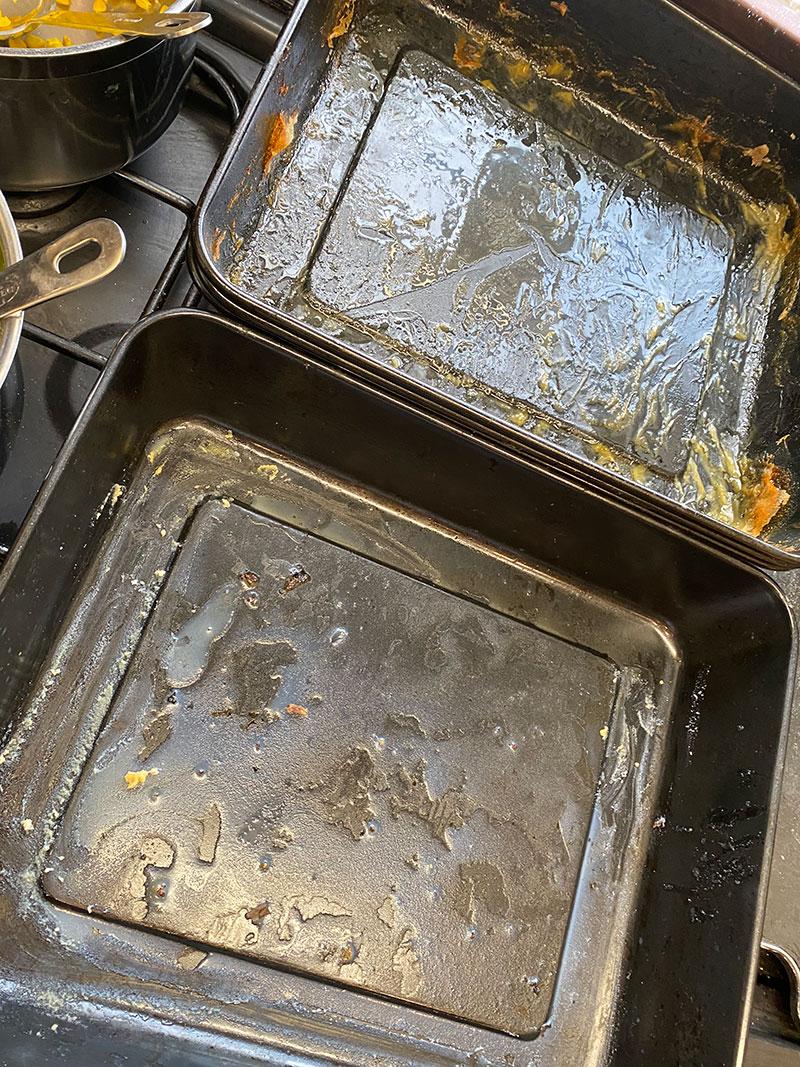
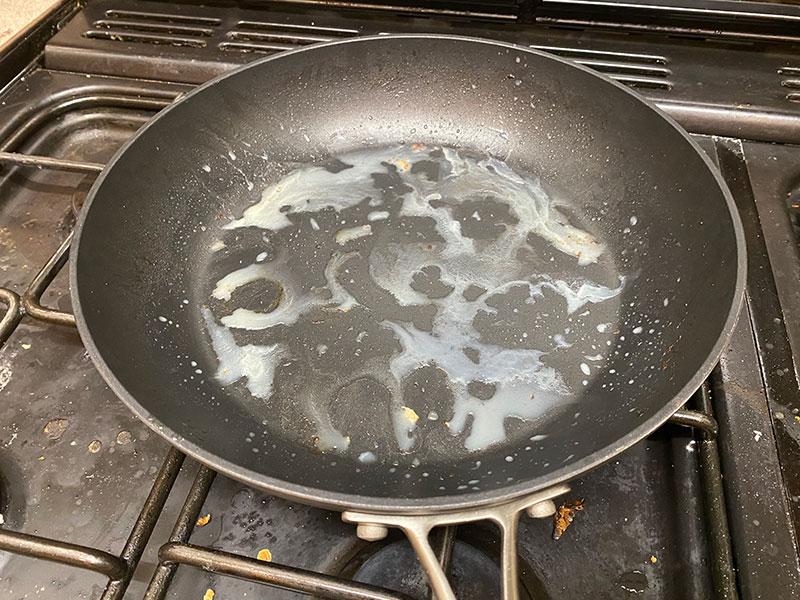
When our customer says, “We don’t put fat, grease or oil down the drain, we’re very careful.” – they are being truthful. They don’t see the grease and fat build in tiny quantities such as a millimetre during one week. They diligently scrape all the bits out when washing a pan and then put the pan in the dishwasher.
The whole family comes round one Sunday during the month; again, they clean out all the foodstuff and then put the meat trays in the dishwasher or wash them in the sink.
We live in a world of recycling now and are told we should wash out yoghurt pots or milk cartons before putting them in the recycle bin. It’s much easier to rinse them under the tap and let the food go down the sink than to collect all that wastewater and dispose of it in the garden.
I washed only half of one yoghurt from this pot in this video and poured it into this vase. A skim covers the top of the vase – you can imagine if sewage were mixed in with this very thin layer weekly, it would soon build up.
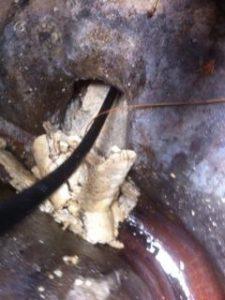
The grease and fat may turn fluid in the heat of the washing up water, but it soon congeals in the cold pipes underground.
After a three or eight-month period – If the pipes outside are not perfect (Many or not.) especially if they are old glazed pipes; this skim of fat builds up in the actual pipe, and the inspection chamber begins to act as a grease trap, because the pipe further downstream, is partially blocked with fat – especially when the tank or the pumping chamber is not emptied for a couple of years or more.
Often when we jet with a high-pressure jetting machine, as you can see in the picture above, the fat has formed the shape of the pipe or half the pipe, and we pull the fat out of the pipe in white lumps.
Although the most considerable expenses and problems experienced, are in the pumping station. You can see in the photo below, that grease and fat have gone brown because it’s mixed with so much sewage.
What can we do?
After reading this blog you may ask your pump engineer, “have I got grease and fat in my pumping station?” and he may say yes, but he may be accustomed to seeing fat in a pumping station and say, “it’s fine we’ll have it cleaned up in no time”. In fact, they should be informing you that it’s not good to carry on allowing the build-up.
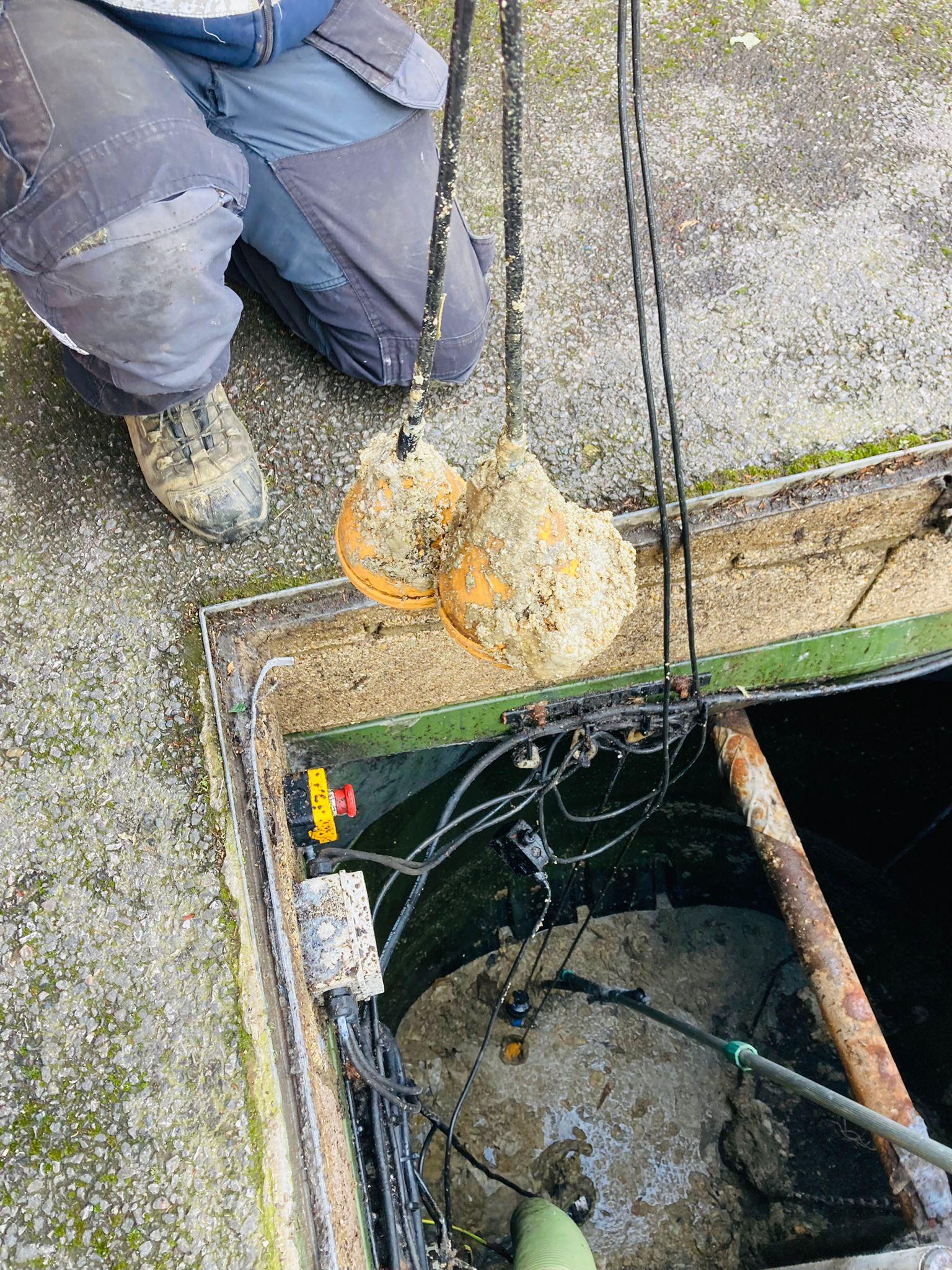
It starts to stick to the float switches early on. After a few months it’s so thick that the float may become inactive, and either the pumping station runs dry (burning out) or it overflows because It can’t switch off (due to being burnt out) or It can’t switch on (due to the fat making the float switch twice the size).
The pump engineer probably cleans off these float switches whilst proudly doing his annual service. You don’t notice the odd time he comes out on an emergency; you don’t even notice when the pumps in the holding chamber break down or burn out, you fix the whole thing and carry on until it happens again.
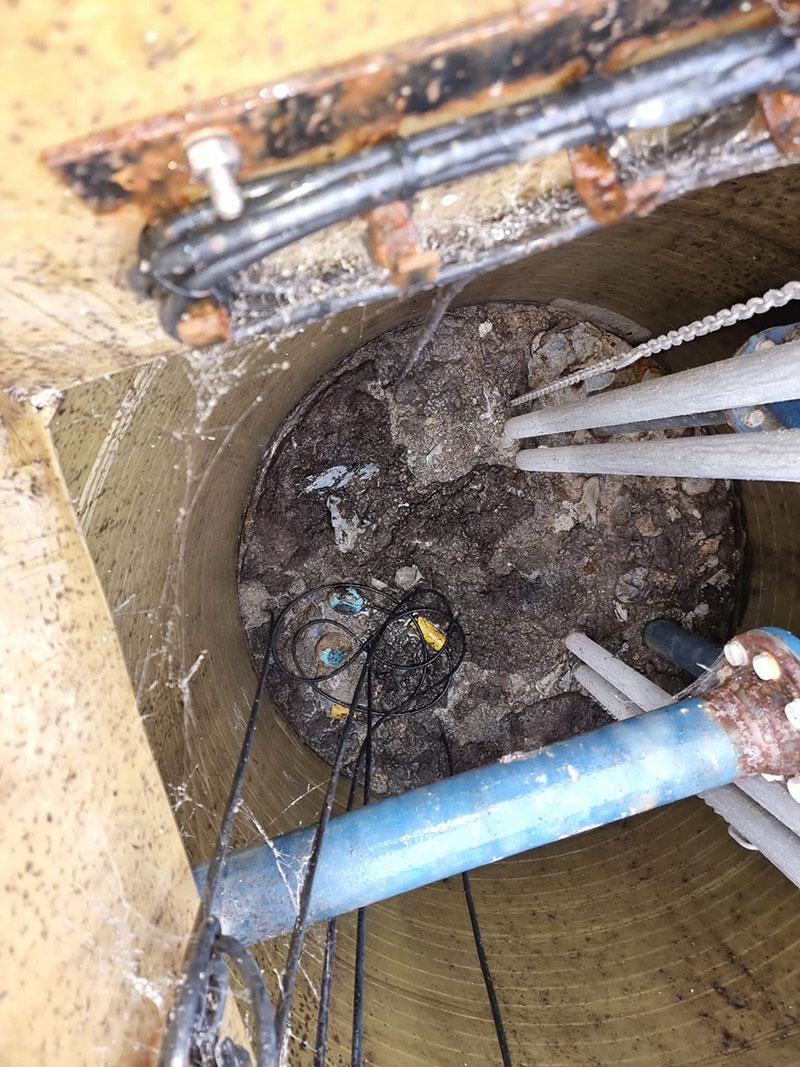
If only the engineer told you about the float switches or the build-up of a crust in the sewage tank when cleaning the system. This would at least give you the information you need to want to stop fat and grease build-up.
I believe it’s cheaper to have a grease trap fitted in the pipe run from the kitchen. A grease trap works best when there’s only the kitchen using it. When you total up the cost of the problematic years gone by – with emergency callout charges and cleaning bills – it’s more than worth it just for the peace of mind and has the quality of life without worrying when it’s next going to go wrong. Take a look at our blog article entitled ‘Grease traps - catch the fat’ for more about grease traps.
Why are we telling you this?
We are bringing this to your attention to help you safeguard your private sewage system. When measures are in place to protect your system from surface water ingress, fats, grease, etc., you will prolong the life of your system and make it trouble-free. Therefore, when we encounter issues that could affect the operation of your system, we like to make our customers aware, so the problems can be addressed.
We are happy to clean and maintain your system whenever you require our service but feel we would not be providing you with a service if we fail to highlight any issues with you concerning your private system.
If you would like to discuss anything you have read in this article, ask for advice or even arrange to have a grease trap fitted please give us a call on 0800 181 684 and we can help you stop fats, grease and oil ruining your drains and sewage systems.

